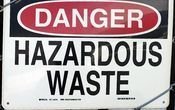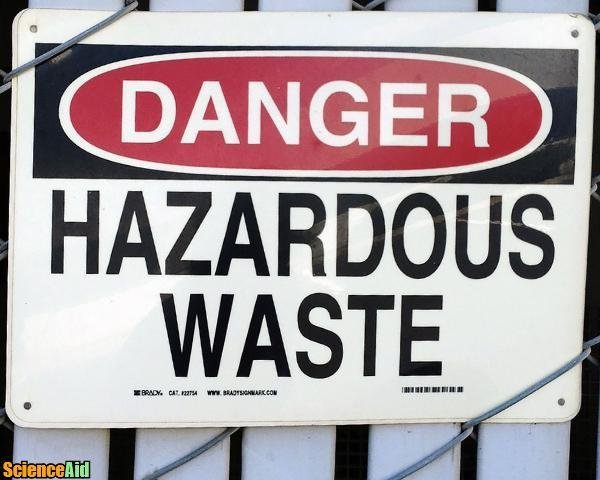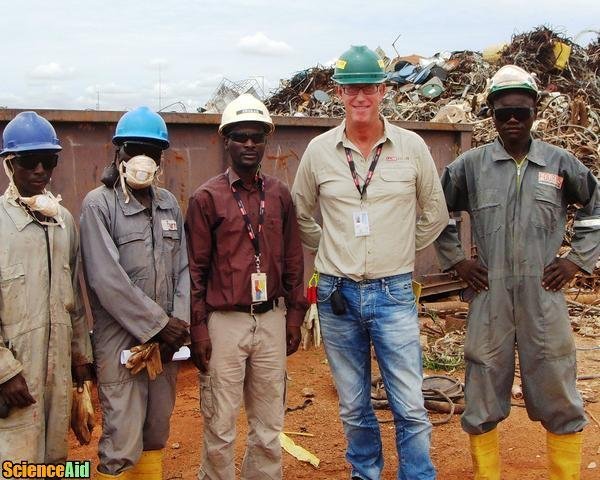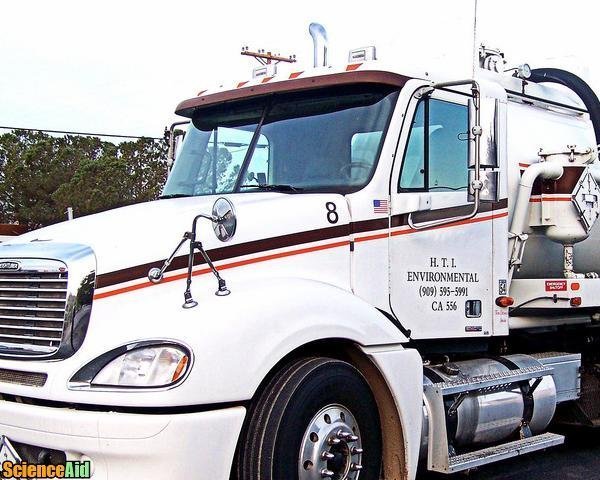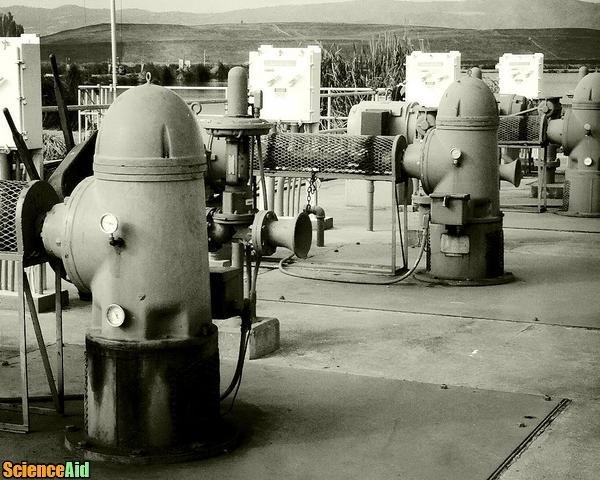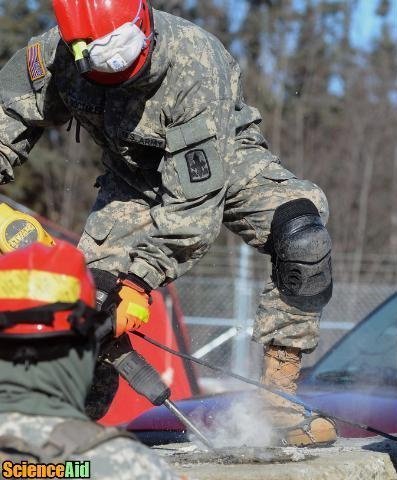Hazardous Waste Managment
Edited by Melanie N Hayes, Sharingknowledge, Jen Moreau
Hazardous Waste Management is simply the treatment, collection, and disposal of Hazardous waste
Hazardous waste is any material that can cause real harm to people, their health, safety, and environment. This material can take the shape of a contained gas, liquid, sludge, or solids. Most Hazardous Waster comes from industrial activities such as manufacturing and production. So, essentially this is stuff we don't want, and if not handled properly, can do a lot of harm. Most governments will closely manage and regulate their countries hazardous waste.
What qualifies it to be Hazardous Waste?
It is classified as hazardous waste if it is corrosive, infectious, ignitable, radioactive, reactive, or toxic. Their classifications are based on their physical, biological, or chemical properties. If it can't do harm it's not here.
- 1Things are either acid, neutral, or alkaline, they are on a scale between 1 and 14. Only those with numbers at either end of the scale are dangerous. They will destroy living tissue and solid material upon contact.Corrosive waste includes strong acidic or alkaline matter.Advertisement
- 2These are usually materials from clinics, hospitals, or biological research. They include things as simple as used bandages and needles.Infectious materials are simply that, biological waste.
- 3Instead, they are wastes that will ignite at a low temperature.Ignitable materials do not normally include firewood.
- 4It is handled separately from the other waste and is often the task of engineers. It is not handled by local governments and can be very difficult to manage. Radioactive materials can last for thousands of years. It is a separate subject by itself.Radioactive waste is the most challenging to dispose of and monitor.
- 5They react violently to air, and water causing toxic vapors, and even explosions. #Toxic waste is well toxic. It contains poisons that are can cause cancer, cause mutations, or kill you instantly. Not only are they toxic to people but much of our environment can be adversely affected as well.Reactive materials are unstable.
How do we keep track of it?
Usually, we know what sorts of things, and places are going to produce hazardous waste. Most areas have rules in position to ensure those places or governments near those places transport, treat, and store this waste as needed.
In the United States and Canada, there is a 'cradle to grave' process in position that keeps track of Hazardous waste from when it is conceived/developed/made to where it is treated and kept, There have been places where this waste has been improperly managed. They need to be 'cleaned up' or dealt with once they are discovered.
What do we do with the waste?
We or they track it, treat it, transport it, and store it when necessary. When possible we reuse, recycle, or reduce it.
- 1Transport.
- When Hazardous is created it usually needs to be moved to a 'TSDF' an approved treatment, storage, or disposal facility. This transportation is carefully regulated with many emergency protocols in place. There are, of course, people who will try to get around the rules. They may transport, or get rid of the waste illegally often causing damage to the nearby environment and population.
- Hazardous waste is rarely moved by air due to possible complications and difficulty developing containers strong and light enough. We also do not move the waste through inland waterways as most of these are fresh water and a valuable commodity.
- The usual way to transport Hazardous waste is by truck through public roadways, highways, and streets. Trucks can easily access most places these dangerous materials are created. They can also go to most treatment, storage, and disposal sites. Most of the trucks contain 55 gallon (or 200 litre) drums. These drums are heavily regulated. Some can be moved in a tanker truck specifically made to contain the Hazardous waste. They are made of aluminum or steel alloys and can hold as much as 9,000 gallons (34,000 litres).
- Railroads do not often move hazardous waste, but when they do, it is often a large amount of it. It is expensive to create the proper container or rail car or tanker for a train. Small or usual amounts are not sent by rail. Some railroads will not allow trains with hazardous waste to go into or near cities or towns.
- 2Treatment.
- Hazardous waste can be treated by biological, chemical, thermal, and physical methods. The first three change the very molecular structure of the waste. The physical method concentrates, encapsulates, and reduces the volume of the waste.
- Biological waste treatment is often used for organic materials including those from the gas and oil industry. One such option is Land farming though no food or forage crops can be grown at the site. For this technique they mix the waste with soil on a track of land. Microbes or bacteria are added to the soil/Waste mixture to aid in the breakdown of the materials.
- Chemical treatment of Hazardous waste is actually three types of treatment. They are Ion exchange, oxidation, and precipitation.
- Thermal treatment uses incinerators and sometimes chemicals. High temperature incinerators' can not only detoxify the waste but also eliminate it. The biggest concern with incineration of waste is the possibility of creating air pollution. When that is not a factor the incinerators include liquid injection incinerator, Fluidized-bed incinerator, Multiple-hearth furnace and rotary kilns.
- Physical treatments include evaporation, flotation, sedimentation, solidification, encapsulation, and filtration. Physical treatment of hazardous waste concentrates, and reduces the volume of the waste, it can also solidify it. Lyme, ash, and water can be mixed with waste to create a solid cement like product. Encapsulating waste is putting it in plastic, concrete, or asphalt.
- Bioremediation is used on previously contaminated sites. Microbes are used to stabilize the hazardous waste already there.
- 3Storage is either temporary or permanent. We will include areas that need remediation or areas that have been contaminated and need to be dealt with. Disposal ultimately ends in land disposal. Though not ideal it is often the final destination of waste, that has not been neutralized or destroyed. There are different means of temporary containment.Storage.
- A lagoon is a temporary holding pond or open pit is a common way to temporarily hold waste. These waste disposal sites do not treat the Hazardous waste.
- These ponds and pits must be lined with flexible membrane liners or impervious clay soils. There is at times some evaporation, sedimentation, or aeration of the waste. These lagoons are not or have not always been put in the safest places and far enough away from the water tables or sources.
- The open pits must also have an impervious base. The may only contain non flowing, solid waste. When the size of the temporary holding pit is no longer manageable the waste must be land filled.
- 4Land filling and Underground injection are those methods.Land disposal is done in one of two ways.
- The least expensive manner of land disposal is deep-well injection. It required little or no pre-treatment of the hazardous waste. The liquid waste is pumped through a steel casing. A great deal of pressure is used to force the liquid into a porous layer of sandstone or limestone. The pressure forces the liquid into the fissured of the rock. That is where it will be stored. The must be over half a mile or .8km below the surface with an impervious layer of rock or clay above it. There is a danger of contaminating water supplies with this.
- Secure landfills are the other common way of disposing of Hazardous waste. These landfills must have 10 feet (3 metres) separating the bottom of the landfill and underlying ground water table. These secure landfills must have a double layer of impervious liners. They also need to have a network of pipes to move and water or liquid that has been saturated with the hazardous waste. That Hazardous waste 'water' is pumped to a treatment plant. To help prevent the hazardous water or 'leachate' from forming, these secure landfills have impermeable covers or caps placed over the landfill.
- For the land storage of waste, a ground water monitoring system is needed. Deep wells allow a groundwater monitoring system that surrounds the site. It allows regular sampling and testing to detect any leaks or contamination. The wells also provide a fail-safe for if a leak or contamination occurs. If the waste is detected, the well will be pumped up, and out to intercept the polluted water, or 'leachate' and send it for treatment. Unfortunately in the past unlined ponds, and pits were used. Many were uncontrolled and have now been abandoned. This is where remediation must occur. The risk to life, health, safety and the environment, must be weighed to determine how urgent the need to 'clean' up the site is.
- 5There are three main ways to fix a site. The least costly is to fully contain the waste. The next is to temporarily remove the waste while repairing the site then return the waste to the site. The last costliest course of action is to take the waste to a whole different site, while still cleaning up the site.Site Remediation.
- Containing the waste is the least costly, and quickest way of dealing with a Hazardous waste site that needs remediation. An impervious barrier is needed at the bottom of the site, whether it is already in place, or needs to be put there. Next 'cut off' walls need to be built, and they need to be deep enough to go all the way to or past the bottom impervious layer. Trenches are built around the waste and filled with a clay slurry to prevent their collapse as they're being built. They are filled with a cement and soil mixture that creates the wall. Lastly, a cap is put on the top of the site.
- Another form of on-site remediation is to temporarily remove the waste, try to repair the damage done and build an onsite secure landfill. In all three cases, the pollution of the site and surrounding area must be addressed. When the site is properly prepared the hazardous waste will be returned to the newly secure site and stored there.
- The last most expensive option for site remediation is to completely remove the waste to a newly prepared site and dispose of it there. As in the other two cases, the area will still need to be cleaned and restored as much as possible.
Referencing this Article
If you need to reference this article in your work, you can copy-paste the following depending on your required format:
APA (American Psychological Association)
Hazardous Waste Managment. (2017). In ScienceAid. Retrieved Apr 19, 2024, from https://scienceaid.net/Hazardous_Waste_Managment
MLA (Modern Language Association) "Hazardous Waste Managment." ScienceAid, scienceaid.net/Hazardous_Waste_Managment Accessed 19 Apr 2024.
Chicago / Turabian ScienceAid.net. "Hazardous Waste Managment." Accessed Apr 19, 2024. https://scienceaid.net/Hazardous_Waste_Managment.
If you have problems with any of the steps in this article, please ask a question for more help, or post in the comments section below.
Comments
Article Info
Categories : Environmental Studies
Recent edits by: Sharingknowledge, Melanie N Hayes
